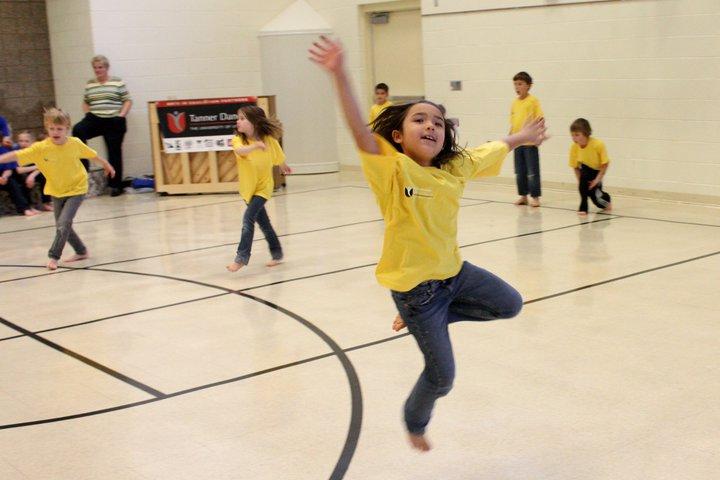Why Dance Class is a Step in the Right Direction

Children from Utah's Bonneville Elementary School participate in Tanner Dance's Side-by-Side program. Photo courtesy of Tanner Dance
Full disclosure: I am biased when it comes to the positive impact that can come from a child's involvement with dance. As a parent, I've watched my own daughter blossom, in great part, through her involvement in dance. I've watched her grow in confidence, becoming a young woman who isn't afraid to use her voice or to dream big, who isn't afraid of hard work, or putting in the necessary time to reach her goals.
As Chairman of the National Endowment for the Arts, I know the tremendous impact arts education can have on a child. There's the Side-by-Side Dance Residency Program from Tanner Dance at the University of Utah, which helps children learn academic topics through dance. In Richmond, Virginia, the youth programming at Latin Ballet of Virginia helps low-income children and their families gain a sense of pride through dance. Another example is NDI New Mexico, where a pre-professional dance program offers young dancers a chance to attend master classes and work with professional guest artists as well as receive college guidance. It is a fact that engaging with the arts can positively impact a child on a multitude of levels.
Earlier this month, I visited Body Vox, in Portland, Oregon, which works with students in elementary, middle, and high school. Body Vox turns school assemblies into interactive movement and performance experiences that educate students about science and dance. Through their Artist in Residence program, students work with a partner to develop choreography that reflects the specific content of the individual program, and have the opportunity to perform their original choreography for their classmates. With support from the National Endowment for the Arts, Body Vox serves more than 35,000 students each year. It was evident that the students participating in Body Vox's programs were engaged, inspired, and confident about their own self-expression.
At the Arts Endowment, we support arts learning, both in and out of the classroom, as a way to develop creative thinking skills and inspire self-expression. Last year alone, the National Endowment for the Arts invested $5.25 million in direct grants to arts education projects because we know that engaging with the arts is one of those transformative experiences the effects of which last long after that child has grown into adulthood. Research studies supported by the National Endowment for the Arts show that the arts can help to close performance gaps in learning; to strengthen social and civic engagement; and to increase levels of empathy, compassion, and tolerance.
Arts education also helps young people grow into leaders, whether that's in or outside the arts field. We've seen countless stories in the media of CEOs and others in senior leadership positions extolling the positive effects of early, and often continuing, engagement with the arts—from John Barrett at Cardinal Health to Tracy DiNunzio at Tradesy.
While I realize that Lara Spencer's Good Morning America comments were an unfortunate mistake—for which she has since apologized—I would like to take this opportunity to invite her to join me for a visit to one of the more than 173 arts education projects supported across the country by the National Endowment for the Arts in FY 2019. I'd like to share with her the impact these programs are making on our young people, whether they're growing up to be royal or working class, whether they're boys studying ballet or girls studying woodworking, whether they'll become professional artists or athletes or entrepreneurs. I'd like her to experience with me, as I am grateful to do every time I visit one of our grantees, the power of imagination, the power of creativity, the power of the arts.




